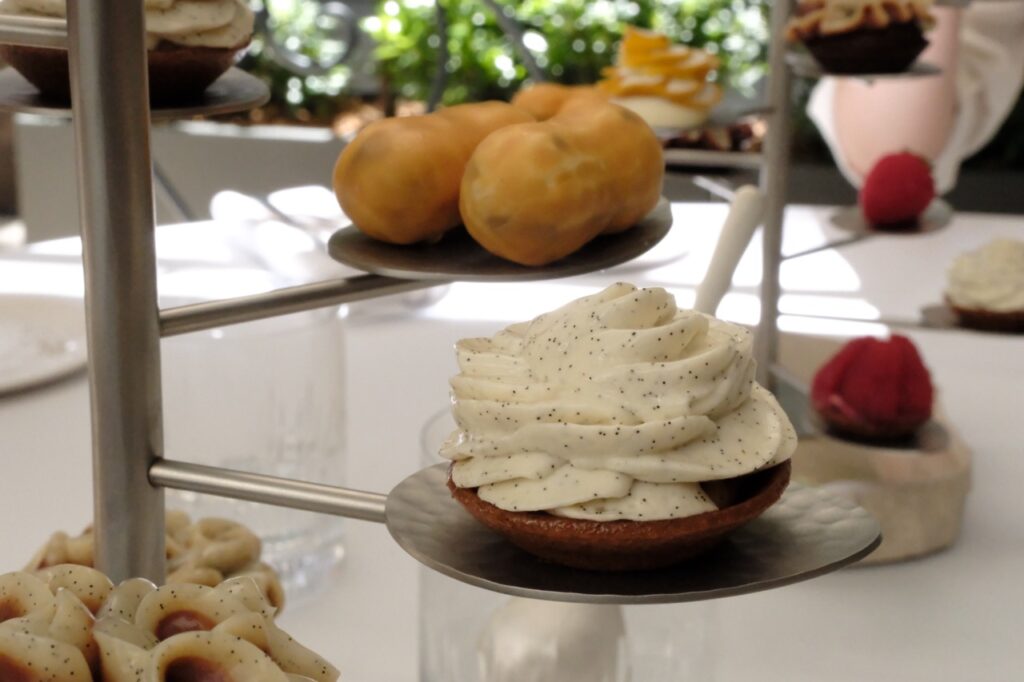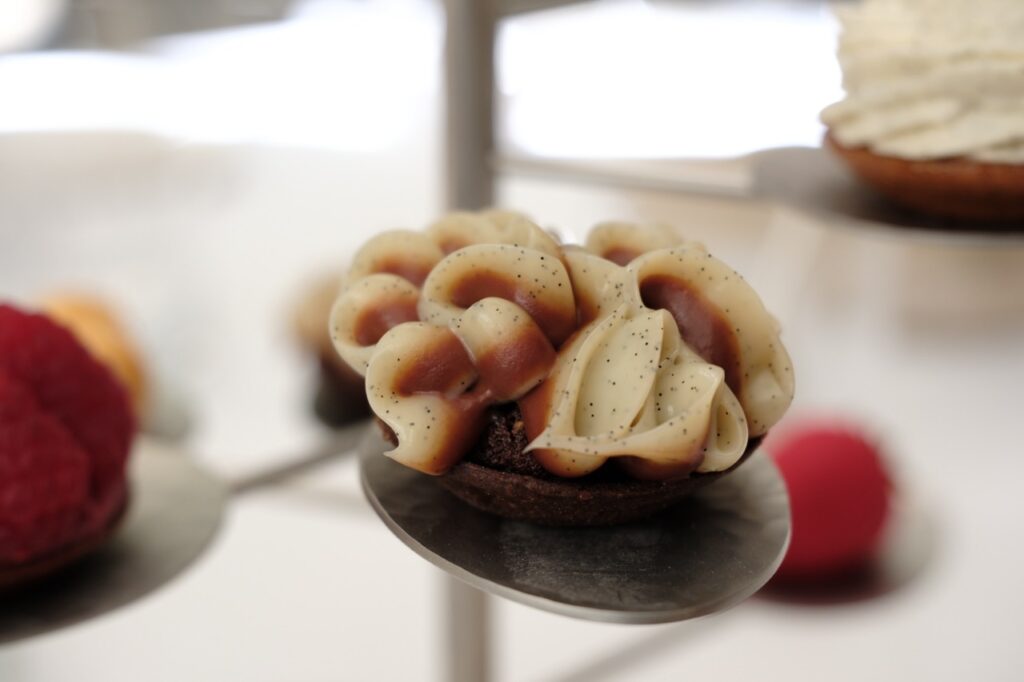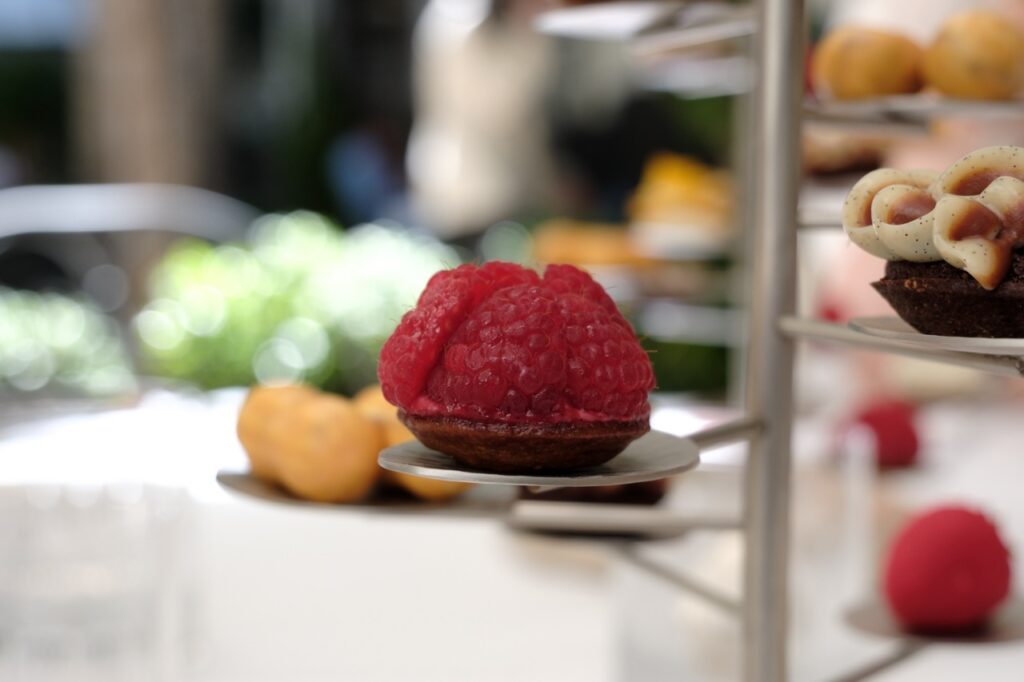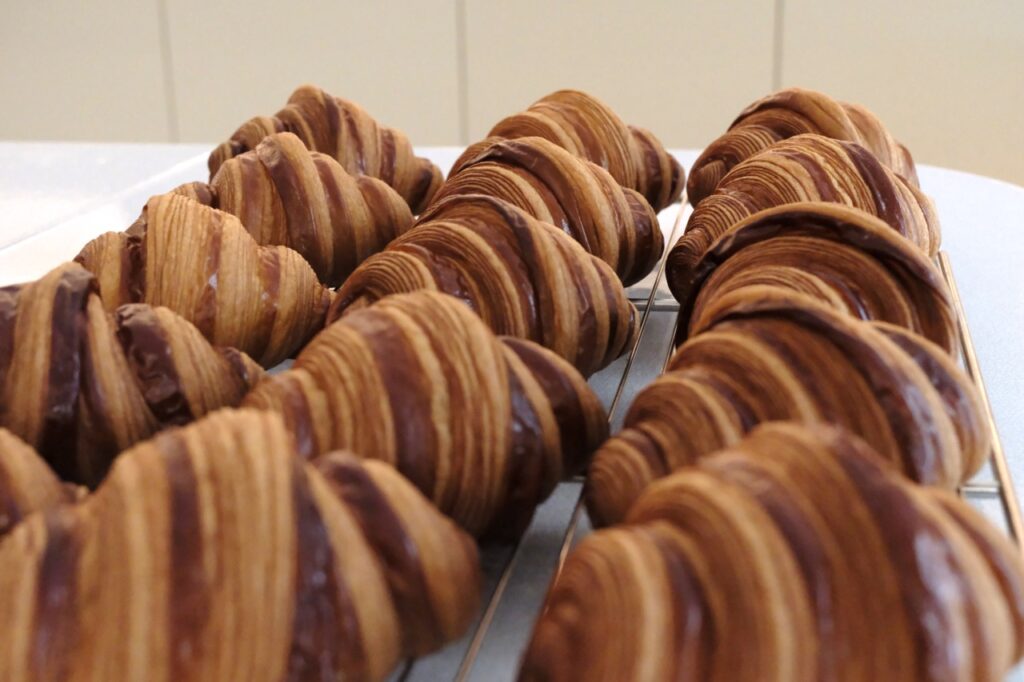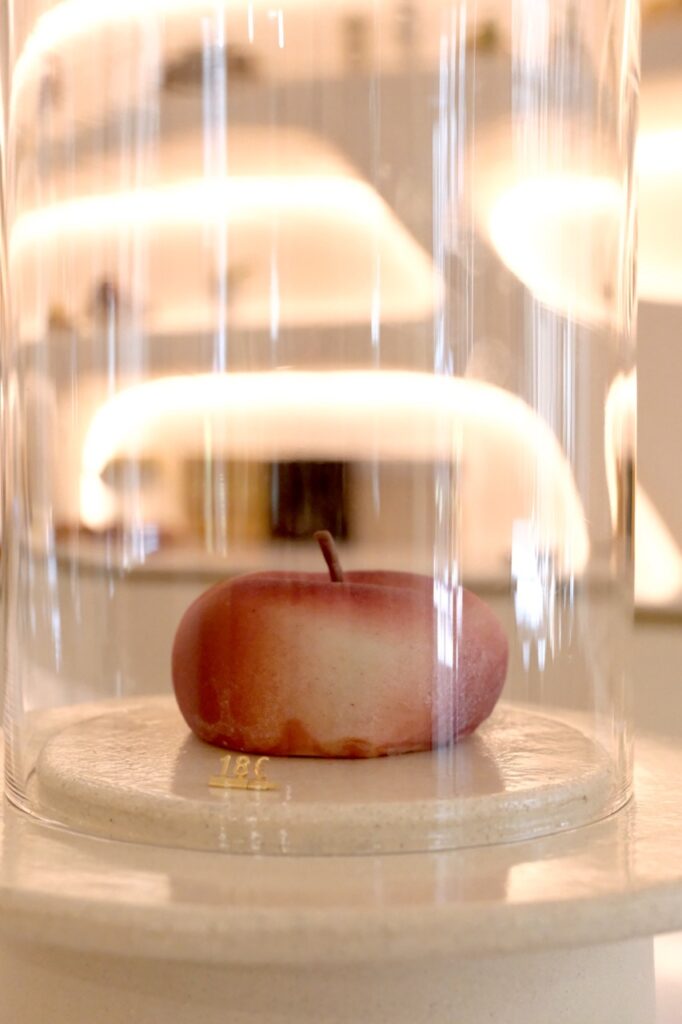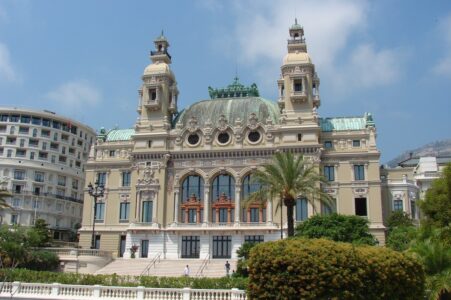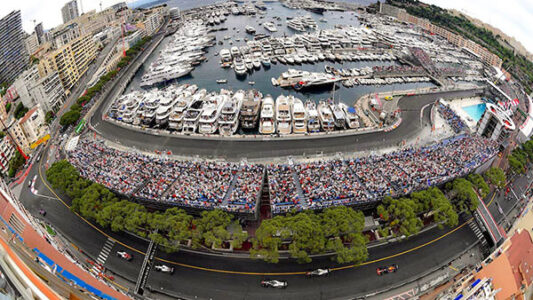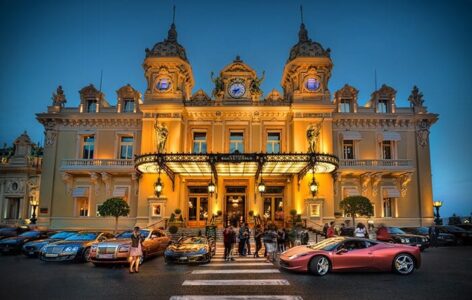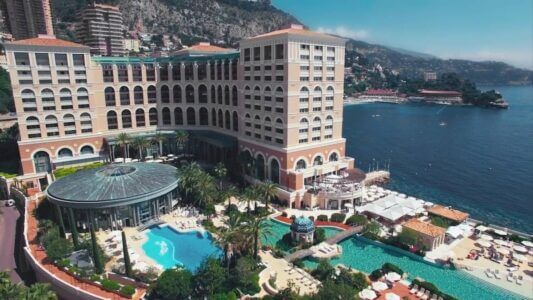Cédric Grolet in Monaco: “What looks good brings people in, what tastes good brings them back”
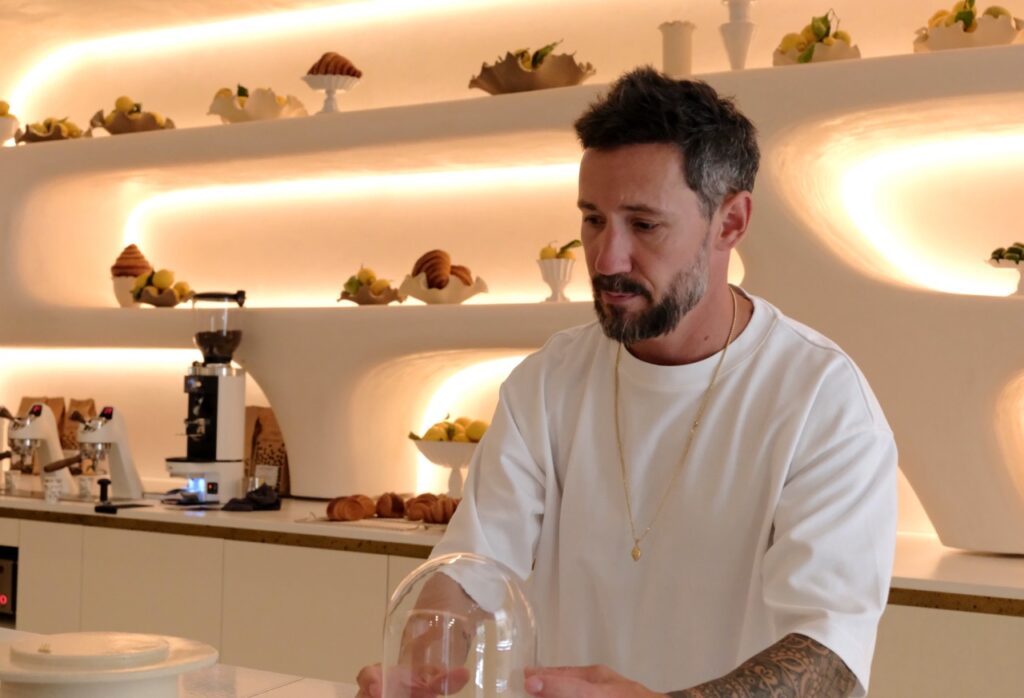
The famous French pastry chef is opening his new boutique at the Hôtel de Paris Monte-Carlo. He shares his vision of modern pastry making with us, a mix of local inspiration and visual creations.
The peanut praline and the strawberry cake, revisited with marzipan, and not forgetting the iconic slightly crispy croissant: pastry chef Cédric Grolet and his tasty temptations have come to Monaco! This Wednesday, the undisputed master of trompe-l’œil, Viennese pastries and colourful ‘Instagramable’ desserts is opening new premises at the Hôtel de Paris. The close collaboration with the Société des Bains de Mer (SBM) embodies the revival of Monegasque gastronomy, with the ambition of attracting a younger, connected clientele.
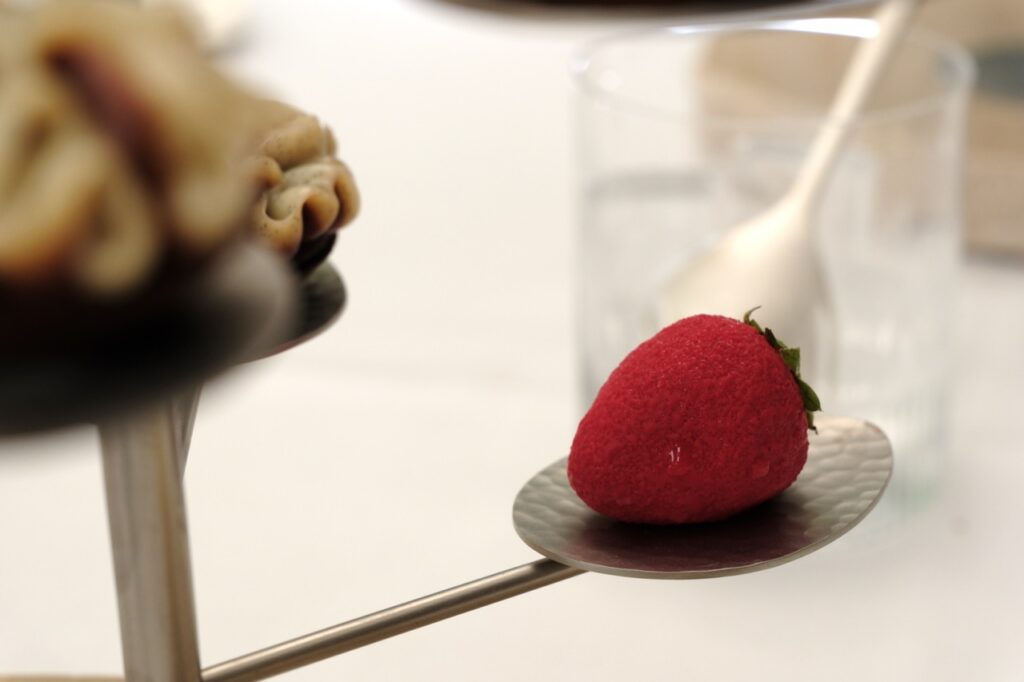
SBM Chairman Stéphane Valeri gave the 38-year-old chef carte blanche on the patio at the Hôtel de Paris. Far from being a simple variation on his Paris and London boutiques, the project took almost a year and a half to complete. Every detail has been designed to fit in with the spirit of the venue: as well as a boutique with an understated design and soft lighting, Cédric Grolet and his team have created a tea room on the terrace – open every day from 8 am to 7 pm, then from Wednesday to Sunday from October. His creations will also feature on the Hôtel de Paris restaurant, room service and banquet menus.
Monaco Tribune: Why did you choose Monaco for your new boutique? How does the Principality inspire you as a pastry chef?
Cédric Grolet: Each boutique we open has its own visual identity, to fit the location. Have you noticed the quality materials and the stone all around? It’s obviously a nod to the Rock of Monaco and its prestigious atmosphere.
Also I was immediately drawn to the region’s citrus fruits, particularly from Menton. Naturally, we included my signature dessert on the menu: the trompe-l’œil lemon, made with Menton lemons and a touch of finger lime. I also had the good fortune of dining with Prince Albert II and learning about his tastes in desserts. My early research turned up something completely different from what he actually likes! He told me he absolutely loves marzipan. When I started out as a pastry chef, I learnt to master French classics like the ‘fraisier’ [strawberry cake]. So I revisited my recipe to include marzipan.
If Monaco were a dessert, what would it be?
I’d love to create a trompe-l’œil rock. We’ve been working on it for some time; we haven’t signed off on it yet, but we’ve got all the symbols. For the first dessert created here, the Fraisier, we wanted to use the red and white colours of the Monegasque flag.
The Mediterranean climate is very different to big cities like Paris or London, it’s hotter and more humid. Did this require any adjustments on your part?
Pastries aren’t meant to be carried around for long periods in high temperatures, especially when they don’t contain a lot of sugar or butter to help them hold their shape. It’s a bit like ice cream: you need to eat a pastry quickly, as soon as it comes out of the fridge (laughs). But humidity and Viennese pastries are enemies. If a croissant is left out for a few minutes it soaks up the moisture in the air and goes soft, almost like a brioche, whereas I prefer it to be crispy. It’s a challenge we learned how to deal with in our boutique in Singapore, where the humidity is much higher than here. Over there we put croissants in the oven every 30 minutes to make sure they stay crisp.
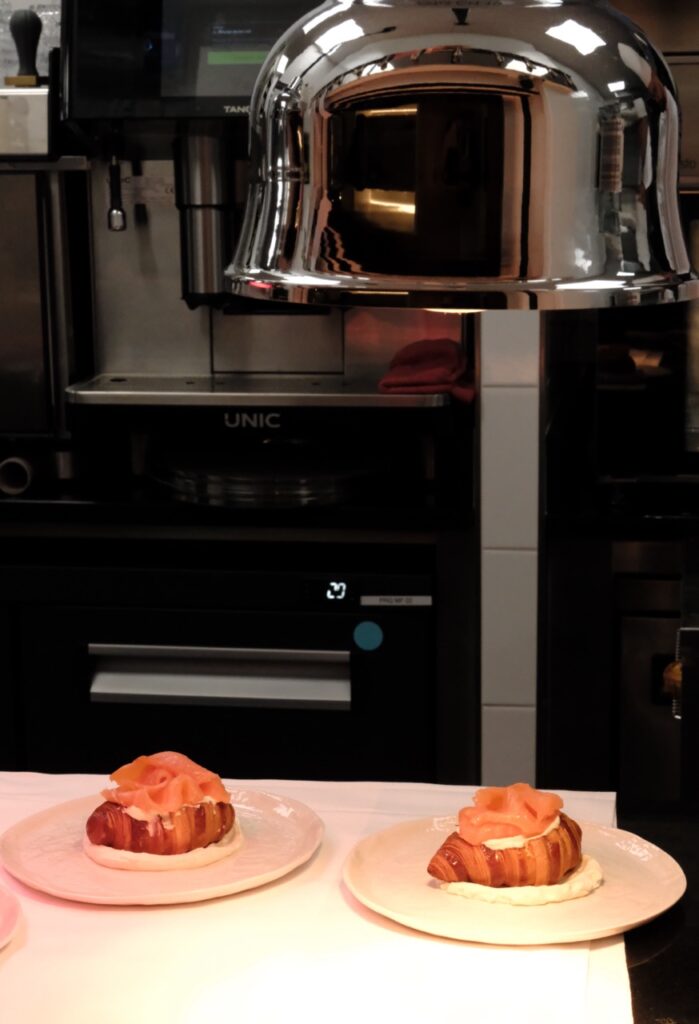
After ten years’ experience, what is your approach to satisfying your customers?
Experience has taught me one essential lesson: with every new premises, we’ve tried to create something that represents the place, the country, the local traditions. But when we really listened to our customers – because I pay close attention to sales statistics – we realised that what they wanted above all was our classics. The vanilla flower, the lemon, the croissants, the chocolate sponge… Everything we’re serving for the opening is what works best in all our boutiques. If you’re creating for the sake of it and people don’t like it, there’s no point – either for them or for us.

How do you manage your social media presence, which has become vital to your success?
When I started out, around ten years ago, my first post on Instagram got 3,500 ‘likes’, whereas as pastry chefs, we were used to a maximum of one or two hundred reactions. I was 28 years old, and I was totally shocked to see so many people like my work without even knowing me. That’s when I realised that I needed to work with the new platforms. Today, we have seven Instagram and TikTok accounts. I couldn’t do it on my own – so I recruited specialist staff!
Has the visual aspect become inseparable from the modern pastry experience?
Actually, it’s always been part of my approach, well before social media. I was brought up by my grandparents: one was a painter and sculptor, and a little misunderstood by the family; the other was very strict and worked in the kitchen. I think I’ve combined the two. I’m drawn to colours, shapes and architecture. I put as much love into designing a boutique as I do into creating a cake. But I never compromise on taste. I often say that “what looks good bring people in, but what tastes good brings them back.”
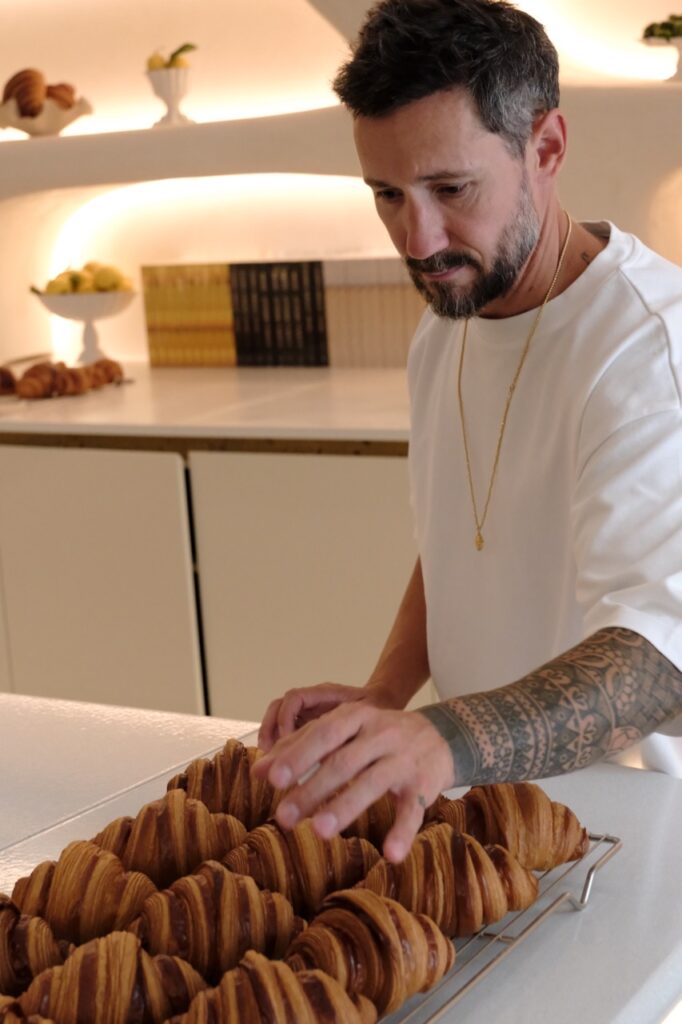
Is your trompe-l’oeil work catching on? Isn’t there a risk of overexposure?
We’ve been doing trompe-l’œil for over ten years, and shops that specialise in the technique started to open six months to a year ago. It’s just the beginning! It responds to a growing demand: there are more and more people who don’t like gluten or who prefer cakes with very little sugar. Trompe-l’oeil lends itself perfectly to that. I deliberately avoid biscuits in my creations, for example.
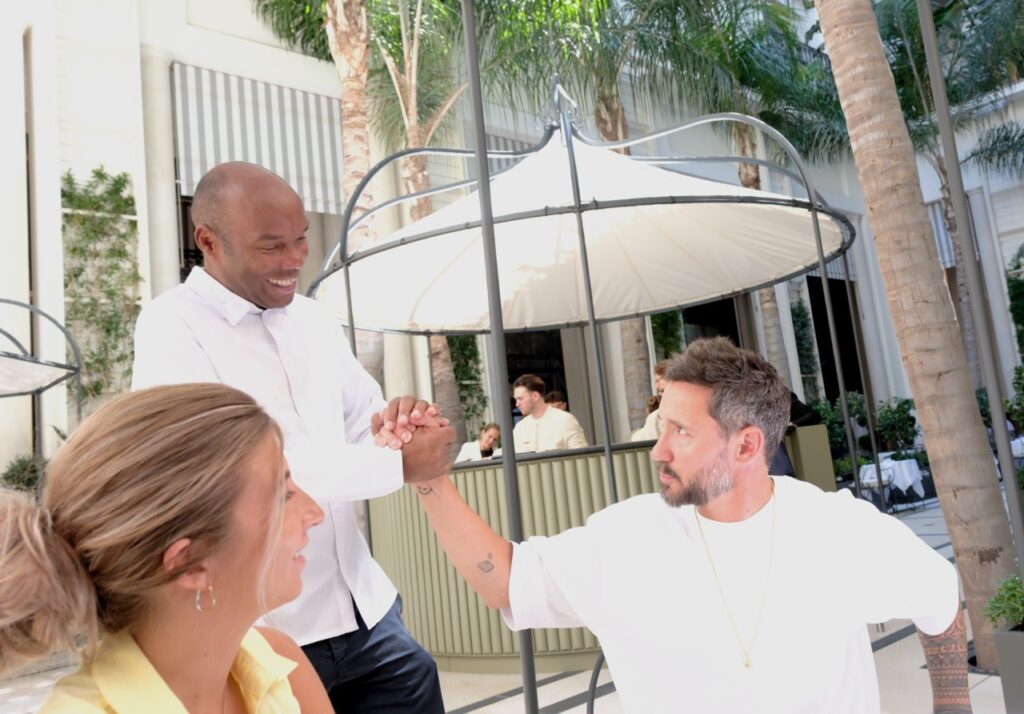
What message are you trying to convey through your creations?
I like to create very intense, very powerful desserts, without mixing too many flavours, so that people ‘get’ them straight away. When I make a lemon dessert, it’s not just any lemon dessert: I’ll hunt down the best lemon in the world, with the least sugar, and seasoning that will make the difference. I try to push the boundaries of excellence in each creation. Take our trompe-l’œil peach: I select peaches at different stages of ripeness to capture the very essence of the fruit, with recipes specially created so that it’s all fruit, no biscuit, so that the trompe-l’oeil is perfect – visually and in terms of taste.

You now manage a group with 600 employees. How do you maintain quality across all your venues?
Each boutique has its own chef and on-site laboratory – it’s a completely different model compared to my peers. I don’t have a central laboratory that supplies five boutiques, but a real team for each location: a chef, a sous-chef, a chef de partie and a commis. Vincent Puma is in charge here in Monaco. He’s my former apprentice, and I’ve been working with him for fifteen years. He was chef at Le Meurice for the last three years and dreamt of returning to the South. When we took over at the Hôtel de Paris, it was a no-brainer. Without the mutual trust built up over time with my staff, none of it would work. In fact, it was Alain Ducasse who placed his trust in us and introduced me to SBM. I’ve worked with him for eleven years – given our thirty-year age difference, he’s a bit like a father to me.
